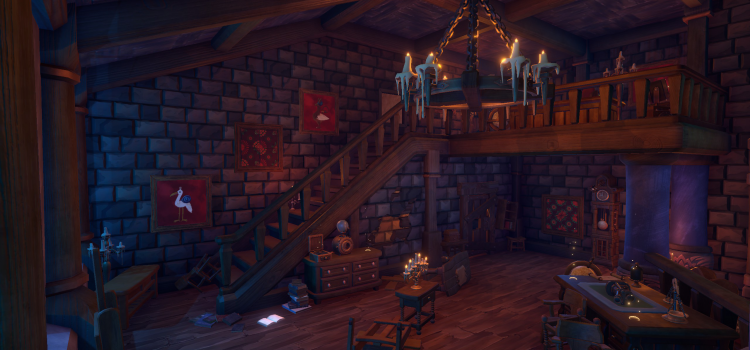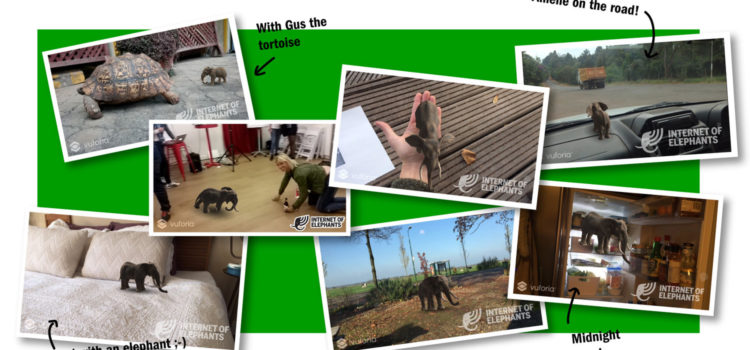Co-op ‘escape’ game
We Were Here Together (2019)


Co-op ‘escape’ game

Chalk Gardens is a fantasy exploration game about coping by changing your mindset. It is my graduation project.


Around the Creek is a storydriven game in which you get to know and love weird characters while making difficult (moral) choices in order to solve an exciting mystery

Oh this is awesome!
Internet of Elephants just released two pages about game prototypes I worked on during my internship at Little Chicken. Go check it out!
https://www.internetofelephants.com/safari-central/
Internet of Elephants is trying to preserve wildlife by engaging an audience through games using real-world data. During my internship I worked on prototypes that explored some of the ways you can create games or playful apps using wildlife and wildlife data.
Niels de Jong – Programmer (intern)
Ramses di Perna – Programmer (intern)
Daan Ruiter – Programmer (intern)
Linda Kentie – Artist
Lianne Alink – Product Owner
Joris van Leeuwen – SCRUM master

The music in the trailer is not mine in any way.
Below you can see a onepage design of the core idea of the game

Incorporating ‘game feel’ into the control of the player character

Create the time to try out several possible solutions
Guide the creative process
Quickly create a working product the company can potentially use
Playable prototype in three weeks
When you have a specific target audience, you need to do thorough research before you come up with ideas. Afterwards, check these ideas to see if they match. This way you know for sure whether your initial assumptions about the target audience are correct or not, befóre you build anything based on those assumptions.
When having conversations, make sure all people involved have the same goal or you’ll get a bad feeling and a fighting-like atmosphere. This can be done by simply asking what the goal is.
You can do an astounding amount of work in three weeks, but there is relatively little time to leisurely explore all aspects or possible solutions.
Consolidated the approach of coming up with multiple ideas and prototyping them before choosing one.
In the “Sell it” project, we were tasked with creating a game that would raise awareness about fire safety in student apartments. This was a school assignment in combination with MonkeyBizniz.
Following an iterative process where we toyed with different ideas while keeping an eye on how we were going to convey the message, we finally created a game where players implicitly experience good and bad practices in fire safety. Example: They have to reach a fire exit before they are themselves consumed by fire, but someone placed some boxes in the way. This gives players the notion that cluttering the hallways is potentially dangerous. Other playercontrollable characters panick when confronted with fire, mimicking how people can react in case of a real fire.
Niels de Jong – Designer, programmer
Sam Morris – Artist, trailer
Emmelie Hoberg – Artist
Ruben van der Laan (Art & Media Management) – Marketing & Manager
Lex Creemers (Art & Media Management) – Marketing & Manager
3 weeks
Originally published on 17-6-2015
10 minutes

First time choosing my own team
A very elaborate inspiration phase because of the tour to Disneyland Paris
Trying to create one focused (WTF – ) effect
Trying to let players experience that their perspective may not be the perspective
Working, alienating experience made possible by two players seeing something else
Playtest provided us with an amazing amount of information we could use to improve this unconventional concept. Also, it was a blast to do.
concepts which require complex technical parts must be proven to work or rejected in an early stage
In this project I was able to create a team with a diverse and balanced mix of disciplines. We went on an excursion to Disneyland Paris for inspiration on “ride” experiences, which we incorporated into the final project.
We created an experience where two players think they are seeing the same things, but are actually experiencing something different. This creates an alienating effect which leaves you wondering whether your perspective is the ‘correct’ perspective.
We did this by having one player take the role of ‘controller’, able to steer an avatar through a game world. In this world there were various interactions possible (some examples: batting a piñata, kicking a soccer ball around, but also releasing children from prison (or electrocuting them))
Meanwhile there was a second player watching this through VR-glasses (google cardboard)(eventually there was too little time to get this piece of technology working so we substituted with a second screen) This second player was allowed to make general comments about how he felt about what he saw, but apart from that neither of the players were allowed to communicated. This rule was installed after we discovered the experience ended as soon as people found out they were seeing different things.
There was a catch however. The second player saw (and heard) something different than the controlling player. In his world the piñata was a corpse, the soccer ball was a brain, and the children were monsters that followed the player. At the end of the ‘ride’, players were able to communicate freely and then they soon found out they had been experiencing something entirely different.
With this ‘ride’ we aimed for creating one big ‘reveal’ moment where players suddenly saw things shift into focus and realize their perspective of the world was not necessarily the same as someone else’s. This experience goal is something I return to more often, as I believe more awareness of this can make people more openminded.
Niels de Jong – programmer, designer
Silver Huber – project lead, programmer, designer
Robbie de Gier – hardware programmer, designer
Rick Kamp – Artist
Emmelie Hoberg – Artist
9 weeks
Originally published on 1-6-2015
5 minutes